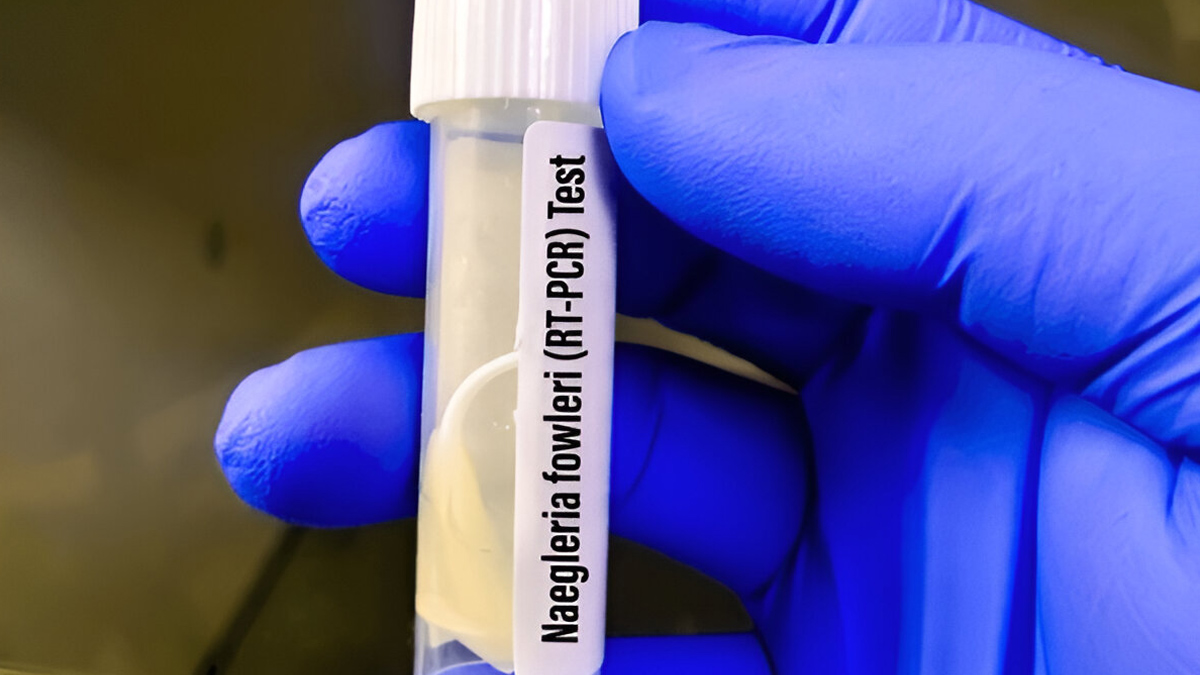
Have you ever jumped into a pool or tank during the monsoon to cool off? It must feel refreshing but here’s something most of us don’t think about: some of those water bodies could be home to a rare but deadly organism known as the brain-eating amoeba.
Table of Content:-
And during the warm, humid months of monsoon, conditions are just right for it to thrive, especially in freshwater lakes, ponds, tanks, and even poorly maintained swimming pools. While the risk is extremely rare, the infection it causes is fast and often fatal. Hence, understanding what it is, how it's transmitted, and how to avoid it can be the difference between life and death.
What is Brain-Eating Amoeba?

According to StatPearls, Naegleria fowleri is a facultative parasite and does not require a host to go through its life cycle and reproduces by mitosis. It is a thermophilic amoeba that is found in temperatures of up to 45 °C and thrives in warm freshwater environments, including soil, rivers, and lakes. It is also found in poorly chlorinated water reservoirs, including tap water and swimming pools.
The 'brain-eating' name describes how this amoeba can find its way into the human body via the nostrils, travel down the olfactory nerve, and cause a rare but fatal infection called Primary Amoebic Meningoencephalitis (PAM).
How Does It Spread?
The amoeba doesn’t cause harm if swallowed. The danger begins when contaminated water enters the nose, during activities, such as swimming, diving, or even performing religious ablutions with untreated water. Once in the nose, it migrates to the brain, where it destroys brain tissue. The disease progresses rapidly, and most cases are fatal.
Also Read: Naegleria Fowleri: Know About A Deadly Brain Eating Amoeba
Symptoms to Watch Out For
Symptoms of PAM usually begin within 1-9 days after exposure. These mimic bacterial meningitis initially, which makes early diagnosis tricky. Watch out for:

- Severe headache
- Fever
- Nausea and vomiting
- Stiff neck
- Confusion or hallucinations
- Seizures
- Loss of balance
The aggressive nature of PAM leads to a 98% mortality rate, with patients dying even with treatment. Survivors may experience neurological difficulties, with complete restoration being rare. Early detection and rapid treatment are critical to prevent deadly outcomes and minimise the possibility of delayed complications, according to a 2025 study.
Pools, Tanks, and Ritual Water: Risk Hotspots
Swimming pools that are not well chlorinated or have poor filtration systems become easy breeding grounds for this amoeba. So are overhead water tanks that are not cleaned frequently or left open. With some practices, where shared washing or nasal rinsing with untreated water is routine, the risk sharply rises.
Also Read: Planning To Take Your Child For A Swim? Expert Warns Against Common Pool Infections
Prevention: What You Can Do
Infections are rare and avoidable. This is how you can keep yourself safe this monsoon:
- Do not swim in warm, stagnant fresh water, particularly following heavy rainfall.
- Swim in lakes, rivers, or pools of doubtful sanitation with nose clips or avoid full immersion of the head.
- Ensure pools are properly chlorinated, public or private, this is non-negotiable. According to Centers for Disease Control and Prevention (CDC) guidelines, a free chlorine level of at least 1 ppm (parts per million) is essential.
- Keep water tanks covered and cleaned regularly. If the water smells foul or looks dirty, don’t ignore it.
- Be cautious during religious rituals involving nasal rinsing. You should always use boiled, distilled, or filtered water, not tap water.
[Disclaimer: This article contains information for informational purposes only. Hence, we advise you to consult your professional if you are dealing with any health issue to avoid complications.]
Also watch this video
How we keep this article up to date:
We work with experts and keep a close eye on the latest in health and wellness. Whenever there is a new research or helpful information, we update our articles with accurate and useful advice.
Current Version